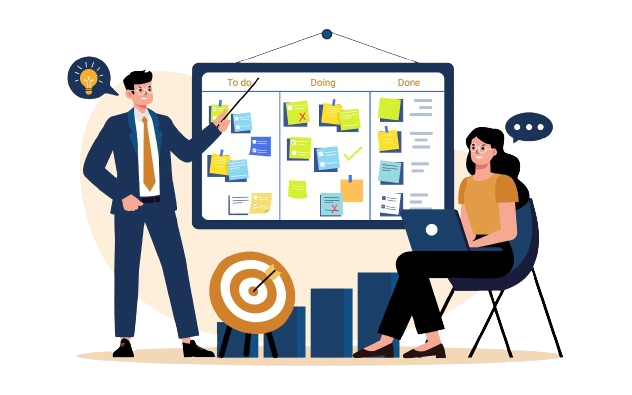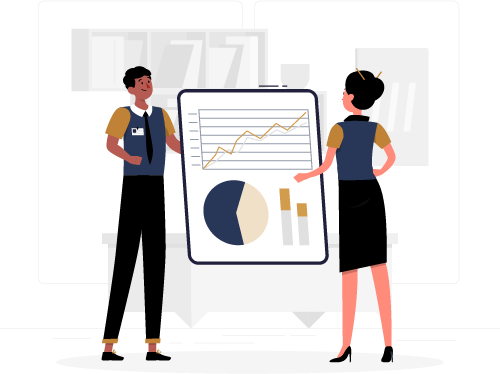Employee development should be a top priority, as it is not merely a perk but a necessity. Investing in employee development enhances skills, boosts engagement, improves retention, fosters innovation, strengthens the talent pool, enhances the organisation’s reputation, and ensures compliance.
More importantly, investing in your workforce ensures that the employees have the required skills and knowledge. Take Amazon for example. In 2020, they pledged $700 million to their up-skilling initiative called Amazon Technical Academy. This programme specifically targeted non-technical employees and provided them with opportunities to transition into software engineering careers. This investment not only benefited Amazon by building a more tech-savvy workforce, but it also empowered employees with valuable skills that can benefit them throughout their careers.
But why and how do you exactly go about creating a winning employee development strategy? Let’s break it down.
Why Invest in Employee Development?
If employee development is your top priority, you are not only helping your workforce grow, but also fueling the growth of your entire organisation. Here’s how:
- A skilled workforce is a powerful engine for growth. Employees with the right skill-set can tackle new challenges, and drive innovation.
- Proper training always helps to minimise the risk and errors ultimately ensuring compliance with industry regulations. This proactive approach reduces potential risks or legal issues.
- Investing in leadership development programmes empowers the executives, leaders, and managers in your company to be better motivators, problem-solvers, and decision-makers.
- A well-trained workforce ensures your company stays up-to-date with industry regulations and best practices at every step, top to bottom.
- Trainings and CPD helps foster innovation. The employees are better equipped to come up with fresh ideas and solutions or build better upon what foundations are already laid, making the best use of all the resources.
- Development opportunities show employees that you value their growth. This leads to higher employee retention and overall satisfaction.
- Training your workforce with the right skills translates directly to increased productivity and efficiency.
How to invest in Employee Development?
Well, the answer is a CPD plan, a roadmap for professional growth. It’s essentially a document that outlines your goals for learning and development over a specific timeframe.
Components of a Strong CPD Programme
CPD, or Continuing Professional Development, would be the right answer, since it is a structured way to ensure your employees stay up-to-date and proficient. Here’s how to plan effective CPD programmes:
Identify Needs
First, assess your company’s goals and identify any skill gaps within your workforce. Employee performance evaluation or survey forms are a better way to do it.
You can also have team leaders or the management assess the teams or individuals based on their expertise.
What are your upcoming projects and what skills are required for them? Are new technologies emerging in your industry and how many employees are capable of operating them?


Set Goals
Once you have a complete layout of all the needs, set clear goals and objectives for the CPD programme.
Align these goals with your overall company objectives for maximum impact. For instance, if a key company objective is to increase customer satisfaction by 10%, the CPD programme could aim to equip the sales team with advanced communication and product knowledge through training workshops.
This targeted approach ensures the CPD programme directly contributes to achieving the company’s strategic goals.
Strategic Planning
Now it is time to find the right training resources. Consider a mix of options: find reputable CPD providers, source qualified trainers, and leverage available online resources.
You can decide on a reputable CPD providers like Society of Local Authority Chief Executives (SOLACE), NHS Health Education England (HEE), and Chartered Institute of Public Finance and Accountancy (CIPFA) for pre-designed or customised courses and certifications.
Qualified trainers with specialised knowledge relevant to your needs is also a good option. Moreover, there is always a wealth of available online resources, including webinars, e-learning modules, and industry publications that can suit your company needs. Going for a blended approach will ensure a comprehensive and engaging CPD programme.


Include Assessment
Building in assessment before, during, and after training is crucial. It helps gauge effectiveness and identify areas for improvement in your CPD programme. For instance, a pre-training assessment would be a good idea.
Also, during training, interactive quizzes or group discussions can assess comprehension and encourage an active participation of employees.
And don’t forget to add a post-training assessment, because a more in-depth skills demonstration, can help measure learning outcomes and identify areas where the programme might need adjustments for future iterations. Assessment at any point in a CPD programme can help gauge its worth and impact.
Track Progress
Monitoring employee performance post-training is the most important step. Did the CPD programme translate into better work outcomes? This feedback loop helps ensure your investment is paying off.
These are some major steps that can help you get started on building and planning a clear and impactful CPD programme for your employees.
However, you can always prefer to consult a CPD provider regarding your company’s needs and taking help in designing a strategy that may suit your employees better.

Conclusion
Even if most employers do not agree to the idea of CPD for employees, from a bird’s-eye view, investing in employee development is an absolute win-win situation.
A good example for this can be the chip-maker giant Siemens. In 2018, they launched a comprehensive programme called Next47. This initiative focused on re-skilling their workforce for the digital age.
The programme offered employees access to online courses, boot-camps, and mentorship opportunities in areas like artificial intelligence, cybersecurity, and data analytics.
This investment ensured Siemens has a workforce that is ready to handle the technological advancement in the market. Organisation with a bigger and evolving mindset always treat their employees as assets rather than a mere workforce.
As Henry Ford famously said, “The only thing more expensive than training is not training.” This is because empowering your workforce with the skills and knowledge they need to succeed, is not about only building a stronger team, but also a future-proof organisation.
























